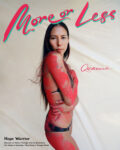

I think the main characteristic of what I am doing is that it is very spontaneous, it is not planned. It is never a search of mind, it comes immediately or it does not come. Where there is a will, there is a way.

Tucked away in the Tuscan countryside, near Siena, German-born outsider artist Deva Manfredo has created a world almost exclusively from stones.
Stacked on top of each other, arranged into peaceful mosaics, or simply grouped together, the stones are meditative and timeless. Manfredo’s work uses only gravity to hold the stones together, giving them an ethereal, otherworldly serenity. Here he discusses his journey into the art world.
Do you view art as a form of game, like a child playing?
Kind of, yes. As a child I was always creating small landscapes with plants, sand and situations and narrative would unfold. In many parts of my life, creating was also a necessity for my own growth, it was a healing force.
Do you see art as a tool of counter-culture?
All of my ideas are always very spontaneous… Society wants to put you in a box. My family wanted to put me in a box. They wanted me to become a Catholic priest; they sent me to a college of Franciscan monks for some years; I was sent to Latin and Greek schools. But they never asked me if wanted to be part of that. So I found my subversive way of escaping, and art was a very important part of that.
A priest, an artist or a Shaman; all have similarities, they all require faith.
Yes, and in the end it all became intertwined for me also. And I mean, eventually I ended up in
some kind of religious community no? (Manfredo was part of the Bhagwan cult, later known as Osho.)
So I was not a Catholic monk, but some other kind of monk (laughs). I conducted meditations, eventually explained to people how meditation worked for me.
Can making art lead to ideology? First you put gesture and then comes the thoughts…
No, it leads to reality, not ideology. It leads to reality.
But isn’t reality always tainted by ideology?
Ideology is a mind concept. You try to change the world so it becomes in line with your ideology. But I don’t think that’s the way I really function. I take the world, I take what I find and create a different reality, but not necessarily an ideology.
How much trial and error is there in your work?
Naturally I look for the most perfect stone, ones that won’t require my intervention. But I mean, all life is trial and error. I think the main characteristic of what I’m doing is that it’s very spontaneous, it’s not planned. It’s never a search of mind, it comes immediately or it doesn’t come. Where there is a will, there is a way.
That comes back to the idea of religious faith, no?
Yes.
What do you think of art schools: the idea that art can be taught?
Art should be part of normal life, I often tell the schoolteachers who come here that every school should have a play area, a bit like this park where we are now.
Like a creative play place?
A creative play place yes, every school should have that. But then comes problems of insurance, bureaucracy and so on. I have a play place here in the forest, and when groups of children or students come and visit, they are always 100 percent into it. They need it, and very often they realities of life does not allow them to play, you know?




